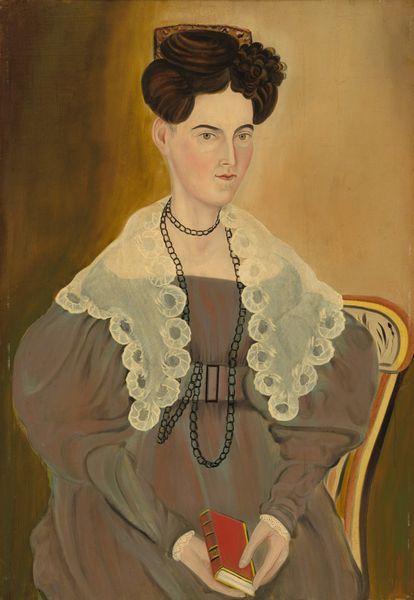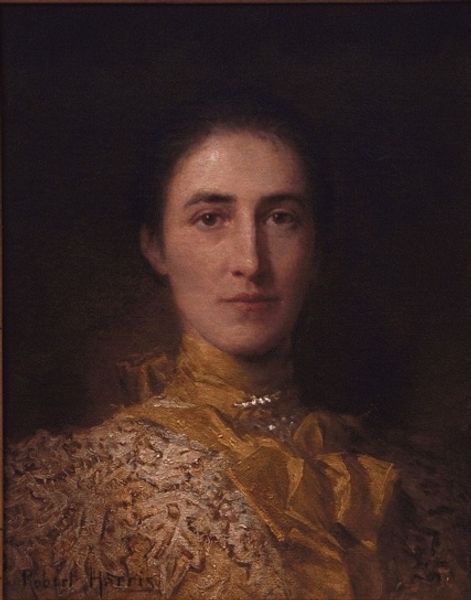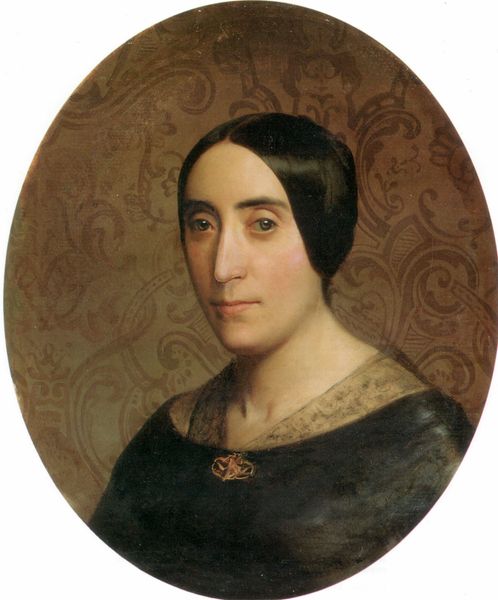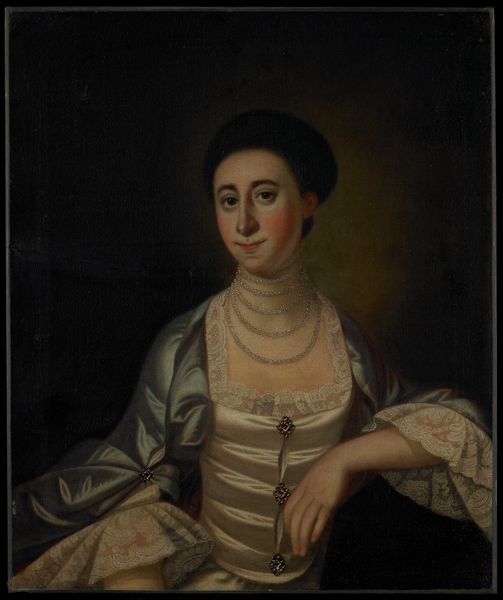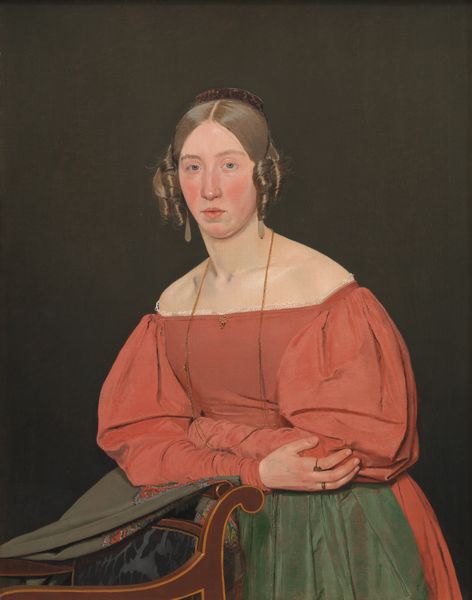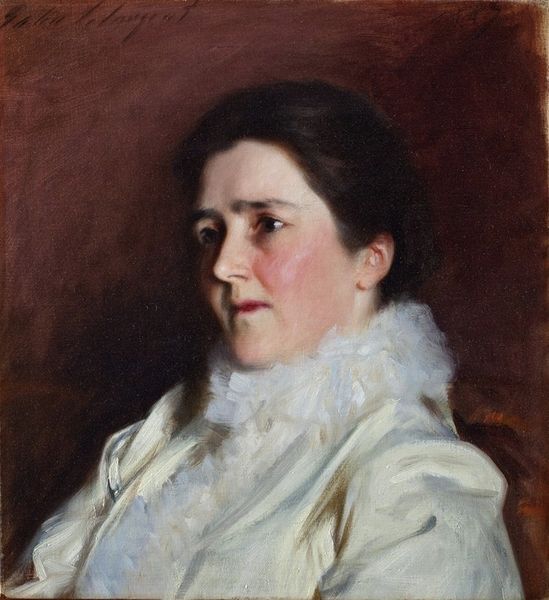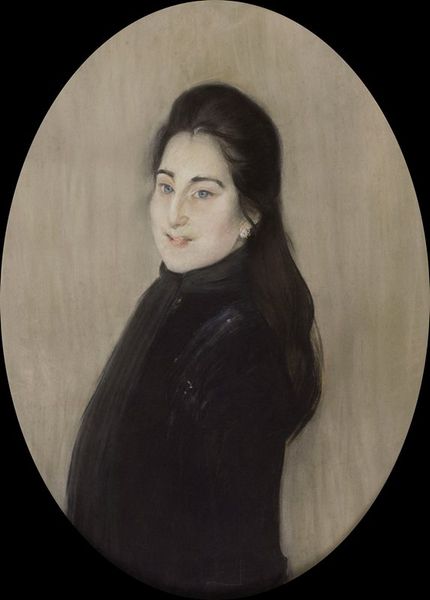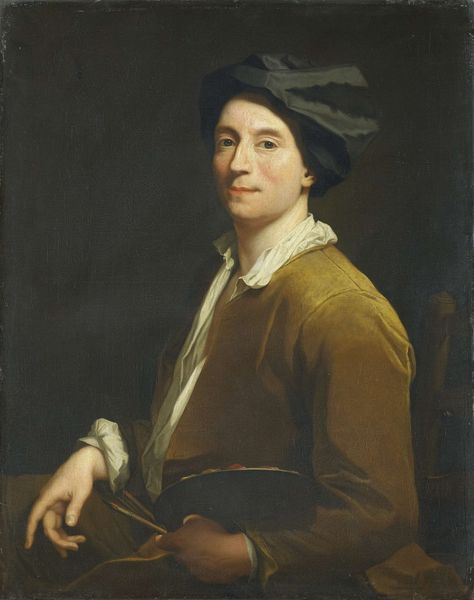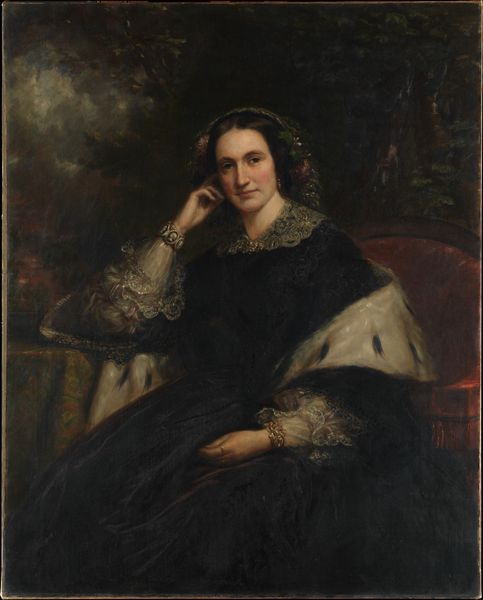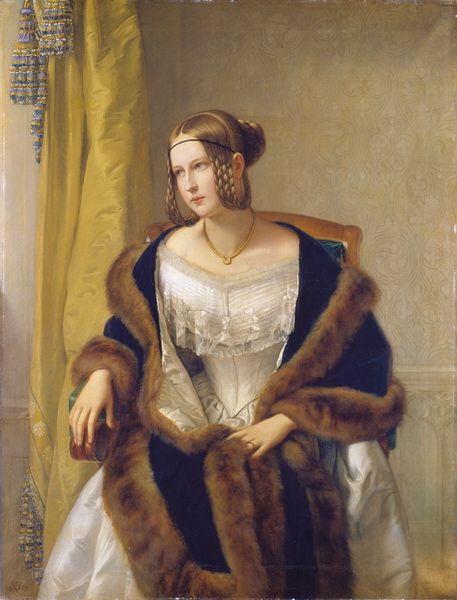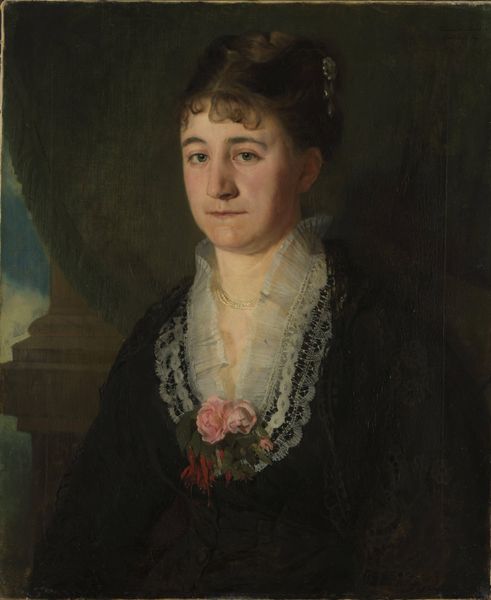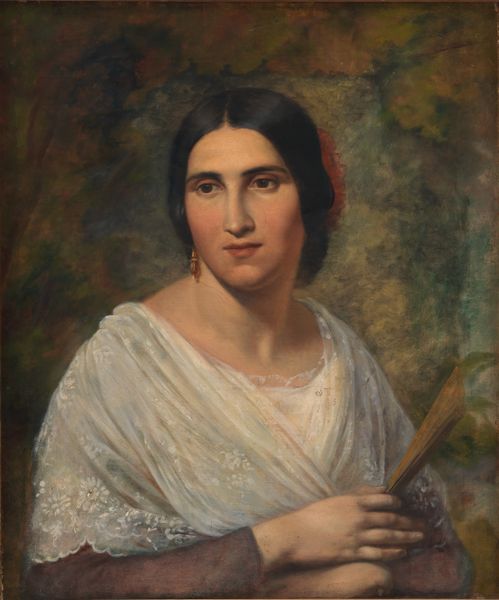
Dimensions: height 70 cm, width 59 cm, depth cm
Copyright: Rijks Museum: Open Domain
Editor: Here we have Willem Witsen's 1912 oil painting, "Adèle van Meekren, de tweede echtgenote van Andries van Wezel," housed here at the Rijksmuseum. It's quite a formal portrait, and that fur stole just oozes wealth. How would you unpack its significance? Curator: For me, it's fascinating to consider the materiality here. The thick application of oil paint, mimicking the textures of fur, pearl, and skin – all pointing towards the production and display of wealth. Do you see the way Witsen highlights these details? Editor: Yes, it’s undeniable. The pearl necklace especially catches the light, drawing attention to it. Curator: Exactly! The pearls themselves were products of a global trade network, indicative of Dutch mercantile power. The fur, of course, speaks to human intervention with nature, transforming an animal hide into a symbol of luxury and status. How does this material excess make you feel? Editor: A little uncomfortable, honestly. It feels quite distant from our current sensibilities, given concerns about ethical sourcing and environmental impact. Curator: Precisely. This portrait, while seemingly straightforward, is layered with implications about labor, consumption, and the control of resources in the early 20th century. We see wealth presented as effortless when the materials suggest extensive exploitation of both human and natural resources. Consider the labor of producing and obtaining these materials – where is that represented? Editor: It’s not, of course, that labour is entirely erased from view! And that silence speaks volumes about social power at the time. Thanks, that really helps me think about it differently. Curator: Indeed! By focusing on the materials, we uncover a complex story about social values embedded within this seemingly simple portrait. I've learned from you also how the current sensibilities inform what to focus on within historical painting.
Comments
No comments
Be the first to comment and join the conversation on the ultimate creative platform.

